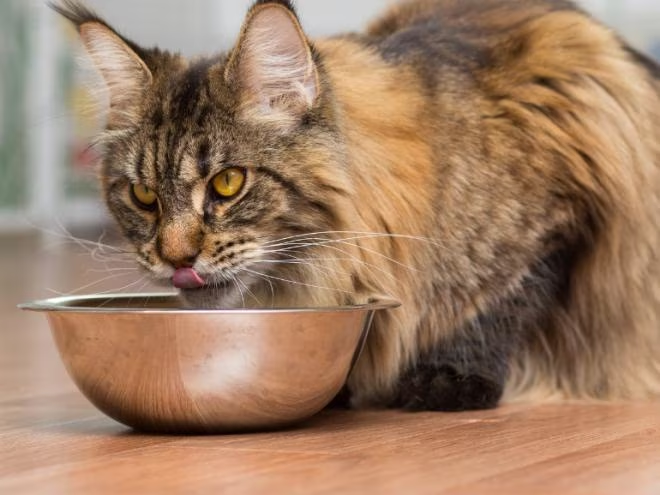Just like humans, cats can suffer from allergies, which occur when their immune system reacts abnormally to harmless substances, known as allergens. These allergens can trigger various symptoms, ranging from mild itching to more severe skin, respiratory, or gastrointestinal issues. Understanding allergies in cats is essential to identifying the symptoms and finding effective treatments.
Common Types of Allergies in Cats
- Flea Allergy Dermatitis (FAD): One of the most common allergies in cats, FAD occurs when a cat is hypersensitive to flea saliva. Even one flea bite can cause severe itching, redness, and inflammation. Itching may become so intense that cats bite or scratch themselves to the point of skin damage.
- Food Allergies: Cats can be allergic to certain proteins, grains, or other ingredients found in commercial cat food. Common culprits include beef, chicken, fish, dairy, and wheat. Food allergies often lead to gastrointestinal problems (vomiting, diarrhea) and skin issues (itching, hair loss, or rashes).
- Environmental Allergies: Cats can be allergic to airborne allergens, such as pollen, mold, dust mites, or chemicals in cleaning products or perfumes. These allergens can irritate a cat’s skin, eyes, or respiratory system, causing sneezing, watery eyes, coughing, and itchiness.
- Contact Allergies: Cats may have allergies to substances they come in direct contact with, such as certain fabrics, flea collars, soaps, or shampoos. This type of allergy often results in localized itching and skin irritation.
Symptoms of Allergies in Cats
Allergic reactions in cats can vary depending on the type of allergy and the severity of the reaction. Common symptoms of allergies in cats include:
- Itchy skin (pruritus), often leading to excessive grooming, scratching, and biting
- Hair loss, especially around the face, ears, paws, and belly
- Red, inflamed skin (often seen with flea allergies)
- Hot spots or skin infections caused by excessive scratching
- Ear infections, with symptoms like shaking of the head, scratching the ears, and discharge
- Respiratory issues, such as coughing, sneezing, nasal discharge, or wheezing (more common with environmental allergies)
- Vomiting or diarrhea, particularly with food allergies
- Swelling or hives, especially around the face, ears, and paws
How Are Allergies Diagnosed in Cats?
If you suspect your cat has allergies, it’s important to visit your veterinarian for a proper diagnosis. The vet will begin by conducting a thorough physical examination and asking about your cat’s symptoms and medical history. To pinpoint the exact cause of the allergies, your veterinarian may use the following methods:
- Skin Scraping or Biopsy: If your cat has skin symptoms, a skin scraping may be performed to rule out parasitic infections like mites, fleas, or fungal infections. A biopsy might be needed if more severe skin reactions are present.
- Blood Tests: Blood tests can help identify whether your cat has environmental allergies by measuring the level of certain antibodies in response to allergens.
- Elimination Diet: In cases of suspected food allergies, your veterinarian may recommend an elimination diet, where specific ingredients are removed from your cat’s food for a period of time to see if the symptoms improve.
- Allergy Testing: Your vet may refer you to a veterinary dermatologist for allergy testing, which can identify specific allergens causing your cat’s symptoms (e.g., food, fleas, pollen).
Treatment Options for Allergies in Cats
Once your veterinarian has diagnosed the type of allergy your cat has, they will recommend an appropriate treatment plan. Treatment may involve a combination of lifestyle changes, medications, and home care strategies.
- Flea Allergy Dermatitis (FAD):
- Flea Control: The most important treatment for FAD is strict flea control. Your vet will recommend flea prevention products, such as topical treatments, oral medications, or collars, to eliminate fleas and prevent future infestations.
- Corticosteroids or Antihistamines: To relieve itching and inflammation, corticosteroids or antihistamines may be prescribed.
- Food Allergies:
- Hypoallergenic Diet: Your vet will likely recommend a prescription hypoallergenic diet that eliminates common allergens. These diets contain novel proteins (e.g., venison, duck) and are formulated to reduce allergic reactions.
- Trial and Error: If you suspect specific ingredients are causing the allergy, your vet may suggest an elimination diet to pinpoint the allergen.
- Supplementation: Omega-3 fatty acids may be recommended to help reduce inflammation and support skin health.
- Environmental Allergies:
- Allergen Avoidance: Try to reduce your cat’s exposure to known allergens, such as dust mites, pollen, or mold. This may involve keeping your home clean and using air purifiers to filter out airborne allergens.
- Medications: Antihistamines, corticosteroids, or immune-modulating drugs like cyclosporine may be used to control allergic reactions. In some cases, allergy shots (immunotherapy) can help desensitize your cat to environmental allergens.
- Contact Allergies:
- Avoidance of Irritants: Identifying and avoiding the substance that causes the allergic reaction is the best approach. This could involve switching to a different brand of cat shampoo or avoiding certain fabrics.
- Topical Treatments: Corticosteroid creams or sprays may help alleviate itching and inflammation caused by contact allergies.
- General Support:
- Frequent Bathing: Regular baths with hypoallergenic or medicated shampoos can help remove allergens from your cat’s skin and fur.
- Skin Care: Topical ointments or sprays may be prescribed to soothe irritated skin.
- Probiotics: In some cases, probiotics may be recommended to support your cat’s immune system and digestive health.
Preventing Allergies in Cats
While it’s not always possible to prevent allergies in cats, there are some steps you can take to minimize the risk:
- Flea Prevention: Use flea control products year-round to prevent flea infestations.
- Quality Diet: Feed your cat a balanced, high-quality diet to support their overall health and reduce the likelihood of food allergies.
- Reduce Allergens in the Home: Keep your living space clean and dust-free. Use air purifiers to reduce airborne allergens and vacuum regularly to remove pet dander and dust mites.
Conclusion
Allergies in cats can range from mild to severe, and they can affect various aspects of your cat’s health, from their skin to their gastrointestinal system. Understanding the signs of allergies and seeking veterinary care for diagnosis and treatment is key to managing your cat’s condition and ensuring their well-being. With the right approach, most cats with allergies can live comfortable and happy lives, free from discomfort.


